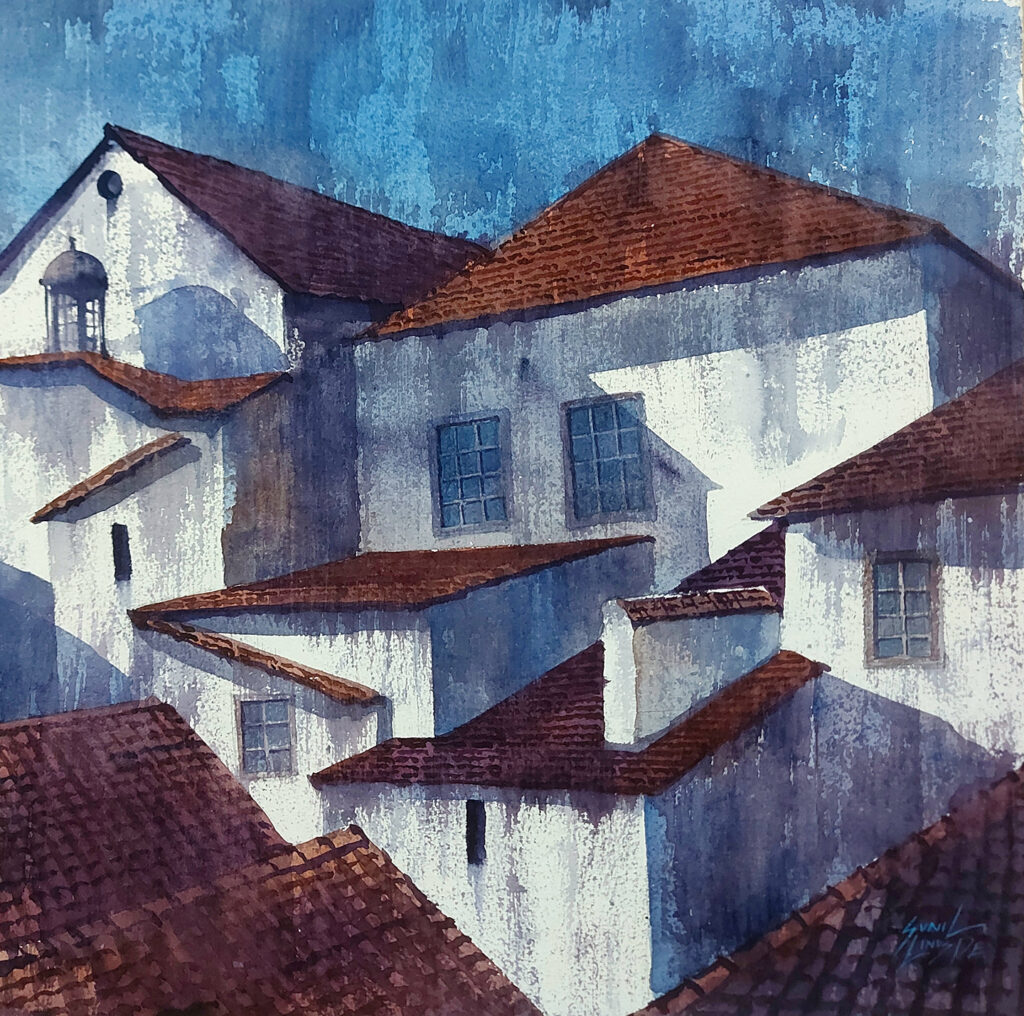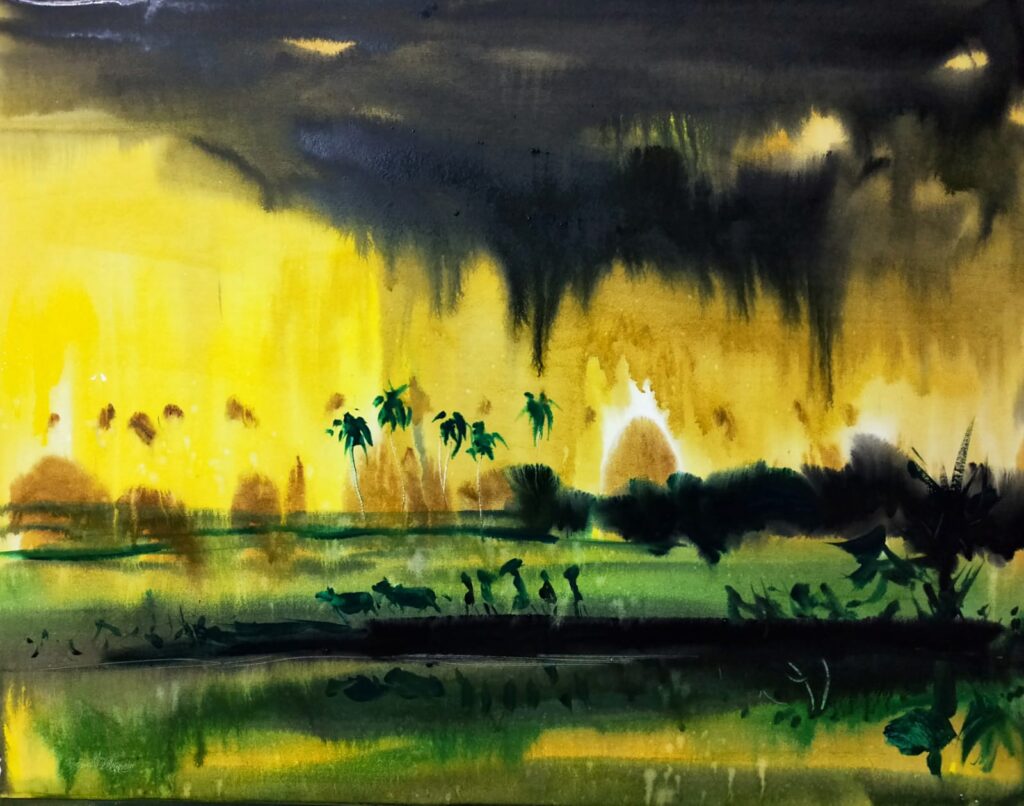Watercolour painting is a popular medium both among professional as well as amateur artists. It offers you a large plethora of creative possibilities and it’s quite easy to use. Here’s an insight into some of the popular techniques that you too could try out.
Wash

The basic wash technique is a technique used in the majority of watercolour paintings. It’s just about dipping a brush into paint and water and spreading it over the intended surface. What’s important though is that this must finally appear as one solid hue. Washes are intended to soak into a painted piece rather than resting on the surface. This makes the tones of the pigment look more ingrained.
The splatter technique

This brings energy into your work and is reminiscent of floating particles or a water spray. Hold your paintbrush between your thumb and middle fingers. To achieve this effect, using your index finger, pull back on the paintbrush bristles and allow them to snap forward.
Layering colours

As watercolour is a thin medium, you will have to build up colour gradually. First, take one colour and lay it down. Once this dries, give it another shade. In places where they overlap, the pigment mixes and this creates a different colour.
Wet on wet

The “Wet on wet” technique can be defined as wet paint applied to wet paper, or added to a wash of fresh wet paint. It’s important to ensure that when you are working with ‘wet paper’ the paper should not be too wet. The colour will always follow the water. The second way is to wet a specific area on your paper and apply some colours. After this, wet another portion, but not as wet as the first area and then apply more colours. Allow to dry.
Wet colour on dry paper

To use this technique, make sure the paper you are using is dry. Fill your brush with your colours and apply them on the dry paper. What this does is that it results in hard edges which need to be softened immediately before the washes are completely dry. A moist brush is ideal to soften the edges. This can also be used to mix colours on paper.